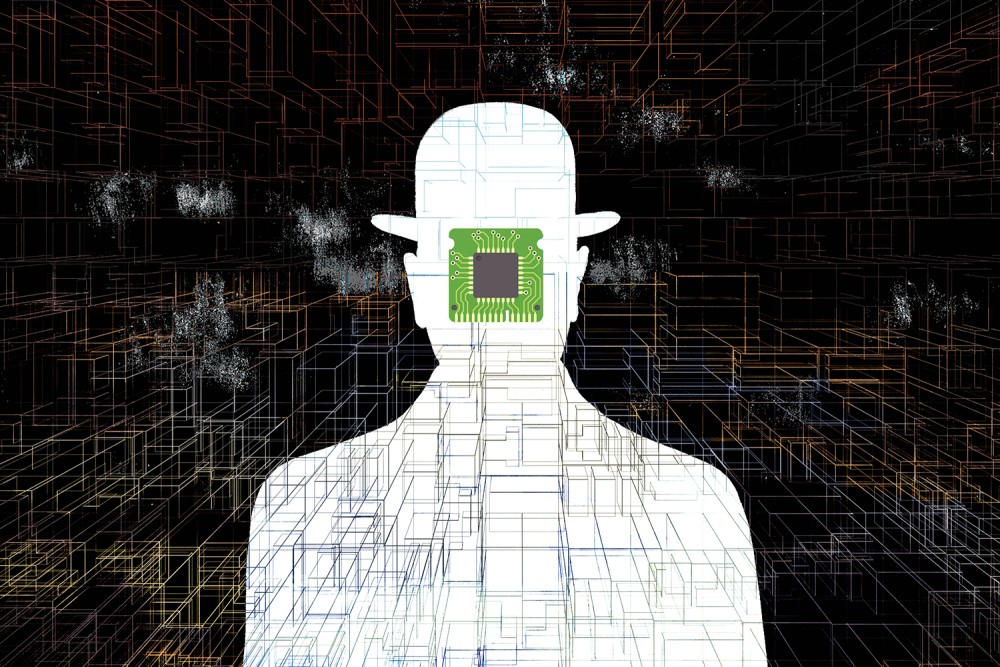Can we build our own future?
Elon Musk’s techno-optimism needs something to temper it. Maybe the dimmer outlook of a companion named Hobbes.

(Century illustration)
In 1995, with the help of his brother and a friend, the young inventor Elon Musk started his first tech company, Zip2 Corp., in Palo Alto, California. The company offered searchable business directories and maps to online newspaper subscribers. While a business directory may seem inauspicious for the Elon Musk we know today, the eventual sale of Zip2 Corp. made way for more ambitious inventions. When Compaq Computer bought the company in 1999, Musk netted $22 million in proceeds. This initial capital helped Musk to become the richest inventor of our day. Musk’s spacecraft company, SpaceX, is working to make humans into an interplanetary species. If life on earth becomes uninhabitable, Musk’s machines could take people back in time to an unblemished planet.
Perhaps even more remarkable, another one of Musk’s companies, Neuralink, is working to turn the human brain into a supercomputer. The company recently implanted its first human subject with a microchip that enables direct brain-computer interface by gathering signals from neurons and sending the data to a computer that processes it in real time. The subject, a 29-year-old quadriplegic, can move the cursor on a computer screen using only his brain. While Neuralink isn’t the first to develop this kind of neural implant, the company is also working on reversing the process to allow a computer to transmit information directly into the brain. According to Musk, Neuralink’s implants will allow for human symbiosis with artificial intelligence.
The same year that Musk founded Zip2 Corp., one of America’s most beloved daily comic strips published its last strip. Cartoonist Bill Watterson put a tempestuous child named Calvin in conversation with a mild-mannered stuffed tiger named Hobbes. Calvin and Hobbes thrives on the tension between its two main characters. Whenever Calvin comes up with a wild idea to build a time machine or a transmogrifier, Hobbes expresses concern about the consequences of the invention. When Calvin’s imagination and intelligence outpace his restraint, Hobbes’s dim view of human nature leads him to utter a warning of some sort.




